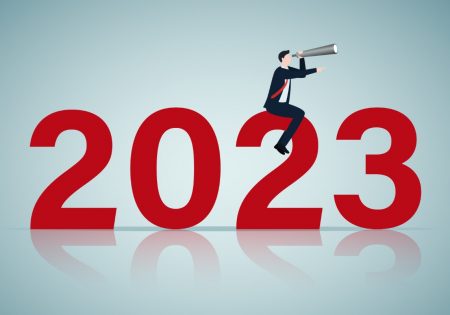Want the latest retirement plan adviser news and insights? Sign up for PLANADVISER newsletters.
A Push to Normalize ESG in Retirement Plans
Part and parcel of a plan sponsor’s basic fiduciary duty is to hold the economic interests of plan participants above all other factors when making investment decisions. This holds across the defined benefit (DB) and defined contribution (DC) plan paradigms, explains Bradford Campbell, counsel with Drinker Biddle & Reath LLP and former head of the Employee Benefits Security Administration (EBSA) at the Department of Labor.
Regardless of who holds final discretion over where participant dollars are directed, plans are faced with very little flexibility in this area, he says, and must subvert ESG factors to economic factors. Such a rigid outlook is causing some to ask whether the DOL should take action to allow more ESG-type thinking in the qualified plan context—especially as niche investment managers emerge with claims that all investors can benefit economically from using more ESG thinking.
Brief History of ESG and ERISA
Before looking ahead to the future of ESG and qualified retirement plans, it will be helpful to review how ESG factors are treated by the Department of Labor (DOL) and its most important instrument for protecting retirement plan participants: the Employee Retirement Income Security Act (ERISA).
The DOL’s latest advisory opinion directly touching on social and/or environmental investing came down while Campbell was helping to run the EBSA under President Bush, between 2007 and 2009. Campbell explains the DOL’s current guiding interpretative bulletin on ESG investing within qualified retirement plans is known as “29 CFR 2509.08-1.”
The 2008 guidance clarifies when non-economic factors can be considered by investment fiduciaries serving tax-qualified retirement plans. In a nutshell, the DOL concluded that they are a reasonable tiebreaker, Campbell tells PLANSPONSOR. This means that only in cases where a sponsor has done a full economic analysis and has discovered two investments are essentially equivalent in terms of the role each would play for plan participants can that sponsor base investing decisions directly on ESG factors.
“When you have an economic tie and then you need to have some way to make a determination, only at that point does it become appropriate to consider issues beyond the pure economics of the investment,” Campbell says.
This framework doesn’t leave much room, if any, for sponsor’s to actually bring ESG into their plan, even in the DC context, where it is conceivable a plan participant would actively choose an ESG investment specifically for its environmental, social or governance characteristics. The chances a sponsor will have the time (or interest or resources) to run this kind of analysis, and then have enough confidence in the analysis to base a documented fiduciary decision on it, are pretty slim.
A sister bulletin also issued during Campbell’s tenure, filed as “Bulletin 08-02,” deals with questions concerning when it is appropriate for retirement plan participants and sponsors to operate as “shareholder activists”—using plan assets to influence the way companies or industries are managed. These questions get into a similar analysis, Campbell says.
“It’s very simple really,” he concludes. “As things stand today, in order to spend money to try to change the way companies are operating or to address environmental factors, the fiduciary needs to be sure this will have a clear economic benefit for the plan.”
Looking Ahead Responsibly
With so many difficult regulatory issues confronting employer-sponsored retirement plans, David Richardson, managing director and head of institutional business development at ESG specialist Impax Asset Management, says he is not surprised that few plan sponsors and service providers have stood up to challenge the DOL’s unfavorable view of environmentally minded investing in retirement plans.
He explains that Impax was first launched in 1998, “to help endowments and other large asset holders structure their portfolios to capture opportunities in addressing issues like climate change and resource scarcity, as these investment themes become more important to overall portfolios.”
“We were around during the creation of what I like to call ESG 1.0, which was really just a way to screen defense-related investments or other ‘sin stocks’ out of clients’ portfolios,” Richardson explains. “Since then, we have watched as this thinking has become much more sophisticated. I would say we have, as an industry, evolved well beyond ESG 2.0 and are pushing into the territory of ESG 3.0.”
He explains ESG 2.0 as the movement that followed up sin-stock screening. As large institutional investors started to think more deeply about environmental, social and governance risks, they started asking what other categories of companies or investments could or should be screened out from portfolios, and in what ways.
“We have seen screens develop in response to water scarcity concerns or carbon emissions, as a few examples,” Richardson notes. “As part of this evolution, there has been a steadily expanding cadre of asset managers who subscribe to the belief that ESG factors are not just moral issues. They include critical factors that speak to the overall risk-return outlook of any portfolio.”
Richardson says this thinking is leading to a new approach and mindset around ESG—one that is not based on negative screening of stocks but on the positive attributes ESG thinking can bring to a portfolio from a purely economic perspective. This positivity is the hallmark of ESG 3.0, he says.
“Today we are at a point where we are ready to apply powerful technology and ESG principals together to cut portfolio risk and boost returns in an economically meaningful way,” Richardson says. “One aspect of this thinking is just the recognition that, regardless of your view on climate change, making investments in companies that are doing better than their peers on energy efficiency, use of renewable energy, resource recovery, waste mitigation and water efficiency offers the prospect of superior portfolio growth.”
Richardson says the important element to ESG 3.0 for plan sponsors and other fiduciaries to consider—the reason why the conversation is becoming more and more relevant even under the restrictive DOL guidance—is this positivity.
“We’re no longer talking about limiting a portfolio’s return outlook because we don’t want to put money into certain categories of stocks that happen to have negative social or environmental associations,” Richardson explains. “Instead, we’re talking about using ESG to optimize any portfolio from the risk-return perspective, not just an environmentally minded portfolio. We are treating climate change and resource scarcity as a pervasive global macroeconomic risk, not an uncertainty.”
ESG in the Short Term
Richardson clarifies ESG 3.0 by explaining it as “an attempt to go under the surface and examine the actual steps businesses across economies and markets are taking to reduce their carbon footprint and prepare for greater resource challenges in the short-, medium- and long-term future.”
He says there is a wealth of reliable research that shows this type of thinking is materially good for returns. While his firm focuses mainly on portfolios that do have a top line environmental theme, the thinking can be applied much more broadly.
“Just as a basic example, consider a diversified commodities portfolio that takes this type of thinking into account,” Richardson continues. “This is not going to be a green portfolio by any stretch of the imagination, but it can certainly be advantaged by realizing that some mining companies or resource transporters have a better environmental safety record and are more skilled at efficiently using resources and minimizing waste or accidents compared with others.”
These types of facts are easily gleaned from data published quarterly by publicly traded companies, Richardson adds, which is why the rapid advancement of data technology is also opening new doors for ESG in retirement plans.
“Imagine if you could open up a database that represented your entire pension portfolio and could break down exactly what parts of your asset allocation program are exposed to which ESG risks,” Richardson continues. “It goes back to this principal of resource optimization, and how investing in the most efficient companies with the best governance will bring the best results, whatever the sector.”
Richardson says there are emerging ESG programs that can help institutional investors look deeper into their portfolios with this type of thinking in mind. A good catchall term for this is “resource optimization,” he suggests.
“Whether you are motivated to try and reduce environmental damage from commodity extraction or if you are simply looking for the most returns from your commodity portfolio, this ESG 3.0 thinking will be helpful,” Richardson says. “In a way we are talking about the breakdown of a barrier between economic and environmental considerations, so personally I think the DOL would do well by revisiting its stance.”
Opportunity Premium?
According to the Asset Owners Disclosure Project (AODP), which publishes an annual report on the state of ESG investing among the world’s largest asset holders, less than 2% of the more than $52 trillion managed by the world’s 1,000 largest pension funds is invested in low-carbon assets. Beyond large pensions, as much as 55% of all global investments are exposed to climate risk, according to the “AODP 2013–2014 Global Climate Index.”
Only five out of 1,000 funds surveyed achieved the report’s highest, AAA, rating. A total of 27 asset owners scored an A rating or above, compared with 22 last year.
Notably, these groups saw no strong correlation between higher sustainability and lower returns. In fact, analysis of investment funds earning the survey’s highest ratings shows that none of the most sustainably run pension, superannuation, insurance and sovereign wealth funds are near the bottom quartile of returns in their respective countries.
Those numbers should be enough to convince active managers of the materiality of climate risk, AODP researchers argue. Also important is that the risk attributes of climate change have a high likelihood of occurring across nearly all geographic locations and economies, they say, making it impossible for a given plan sponsor to isolate its portfolio.
You Might Also Like:

Crossmark’s Doll Projects Long-Predicted Recession to Materialize in 2024

Doll Scores 50/50 on 2023 Predictions
